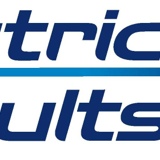Information
-
The audit is split into sections and each section has questions relating to observed practice related to energy efficiency.
These questions are based on improvements to behavioural change and for capital implementation to achieve best practice.
-
Customer name (to appear in title)
-
Account name
-
Account number
-
Location
-
Conducted on
-
Prepared by
-
Audit attendees
-
Document No.
Resource profile
Benchmarking
-
Education
- 8010 Preschool Education
- 8021 Primary Education
- 8022 Secondary Education
- 8023 Combined Primary and Secondary Education
- 8024 Special Education
- 8100 Tertiary Education
- 8101 Technical and Vocational Education and Training
- Other
-
Provide ANZSIC code and descriptor
-
Key Business Activity Indicator Enter number of students and staff (specify reporting year)
- 2012-13
- 2011/12
- 2010/11
- Other
-
2012/13
-
2011/12
-
2010/11
-
Please enter number of students and staff (and specify desired reporting year)
Energy consumption
-
Energy consumption
- Electricity
- Gas
- Other
-
Electricity Quantify annual consumption in kWh. If possible, provide total cost of electricity.
-
Natural Gas Quantify annual consumption in GJ. If possible, provide total cost of natural gas.
-
Specify other energy inputs
-
a. State resource; and b. Quantify annual consumption (provide appropriate SI unit as well as total cost of consumption).
Carbon impact
-
Impact Greenhouse gas emitted from energy use (in kg CO2-e/year)
- Define carbon source
- Total greenhouse gas emission
-
Impact
Greenhouse gas emitted from energy use (in kg CO2-e/year) -
a. State resource; and b. Greenhouse gas emissions in kg CO2-e/yr
-
Total greenhouse gas emission (in kg CO2-e/year)
Energy efficiency
Energy Overview
-
Does the site monitor it's energy use, including sub metering (or have an energy management plan in place)?
-
What is the primary energy use across the site?
- Heating, ventilation and air conditioning
- Lighting
- Electrical appliances including computers and peripherals
- Hot water system
- Other
-
Please specify
-
Has the site provided requested pre-assessment data?
-
Observations on energy contracting, ie negotiating best rates
-
Observation on load shifting ie switching loads to off peak
Actions
-
What type of energy saving initiatives are already implemented at the site?
-
Are there any future energy saving projects planned for the site?
Lighting
Lighting
-
Select lighting areas that are applicable to your site
- Interior lighting
- High and low bay lighting
- Exterior lighting
-
Are external lights only on during hours of darkness? (eg perimeter lights, car parks, external storage sheds etc)
-
Are there movement sensors on lighting to ensure it is off when there is no activity?
-
Did the site complete the lighting pre-assessment requirement?
-
Please find attached in Appendix 1, a breakdown of energy consumed by lighting fixtures currently installed onsite. The volume of energy consumed (in kWh/year) on lighting and percentage (%) of total energy use. State assumptions used.
-
Are there any lights left on where there is no one in the area?
-
Are there movement sensors on lighting to ensure it is off when there is no activity?
-
Are levels of lighting suitable in the areas being assessed?
-
Are there lights that are not functional?
-
Tip
-
Tip
-
Are there areas that are over lit or where artificial lights are on when natural light could be used instead? (For example, skylights, windows etc)
-
Tip
-
Have you assessed options for de-lamping, dimming or multilevel switching to reduce energy consumption.
-
Is lighting low energy?
-
Tip
-
Are light switches obvious? And are there sufficient light switches?
-
Tip
-
Are there any barriers to adopting energy saving technology, such as older sites where major lighting infrastructure changes may be difficult
-
Can you adopt voltage reduction and optimisation energy saving technologies?
-
Tip
Actions
-
Please consult a lighting specialist before retrofitting lighting fixtures or fittings to ensure they are fit for purpose and meet health and safety requirements.
-
Recommendations from the LIGHTING Section
Action
-
Energy management option
- Energy auditing: Assessing energy use and greenhouse emissions
- Energy efficiency: Apply energy efficient technologies and practises
- Energy conservation: Reduce energy demand
- Energy source selection: Use the most appropriate energy source for the application
- Energy reuse: reusing waste heat where applicable
- Other
-
Recommendation
-
Priority Rating
Heating/Cooling
General heating and cooling
-
Who controls the heating and cooling controls and operation?
- Facilities operator
- Teachers
- Students
- Room occupant
- Other
-
Is heating equipment regularly serviced to ensure its correct and efficient operation?
-
Is heating and cooling pipework appropriately insulated?
-
Are heating times programmed to match occupancy times? (including holidays)
-
Is heating and air conditioning in the same room operating simultaneously?
-
Please specify
-
What type of heating and cooling systems can be found in the facility?
- Centralised
- Building specific
- Room specific
- Function specific
-
Are heaters left on when no-one is in the area?
-
Are functioning areas heated to more than 19 deg C?
-
Tip
-
Are windows and doors used to reduce the temperature when the heating is on?
-
Tip
-
Are thermostats and thermostatic radiator valves set to the correct temperature and then left alone?
-
Tip
-
Are thermostats/temperature sensors located in the right places and are settings of thermostats regularly checked
-
Tip
-
Are there sources of unwanted heat in air-conditioned rooms?
-
Tip
-
Are employees using portable electric heaters?
-
Tip
-
Are extraction fans for areas such as toilets and kitchens time controlled? And are these fans fitted with self closing shutters?
-
Tip
Cooling towers
-
Does the site have a cooling tower installed?
-
How many cycles of concentration does the cooling tower operate under?
-
Tip
-
Do you have variable speed drives installed?
-
Tip
Actions
-
Recommendations from the HEATING/COOLING Section
Action
-
Energy management option
- Energy auditing: Assessing energy use and greenhouse emissions
- Energy efficiency: Apply energy efficient technologies and practises
- Energy conservation: Reduce energy demand
- Energy source selection: Use the most appropriate energy source for the application
- Energy reuse: reusing waste heat where applicable
- Other
-
Recommendations
-
Priority rating
Water
Hot water system
-
Is the temperature of the hot water set to just over 60 degC?
-
Tip
-
Are hot water systems turned off during holiday periods and shut downs?
-
Is hot water being used when cold water would be equally effective? (For example washing floors and rinsing)
-
Are hot water pipes and cylinders appropriately insulated?
-
Are boilers and related valves, flanges and pipework insulated to prevent heat loss?
-
Are there any signs of leaks for the hot water heating system?
-
Are hot water heating systems serviced regularly?
Actions
-
Recommendations from the WATER Section
Action
-
Energy management option
- Energy auditing: Assessing energy use and greenhouse emissions
- Energy efficiency: Apply energy efficient technologies and practises
- Energy conservation: Reduce energy demand
- Energy source selection: Use the most appropriate energy source for the application
- Energy reuse: reusing waste heat where applicable
- Other
-
Recommendations
-
Priority rating
Electrical
Electrical
-
Are all computers, printers, and associated equipment switched off when not in use? (Especially monitors left in standby)
-
Are photocopiers switched to stand-by mode when not in use for long periods?
-
Are domestic appliances energy star compliant?
-
Are all seals on refrigerators, freezers etc in good condition?
Actions
-
Recommendations from the ELECTRICAL Section
Action
-
Energy management option
- Energy auditing: Assessing energy use and greenhouse emissions
- Energy efficiency: Apply energy efficient technologies and practises
- Energy conservation: Reduce energy demand
- Energy source selection: Use the most appropriate energy source for the application
- Energy reuse: reusing waste heat where applicable
- Other
-
Recommendations
-
Priority rating
Compressed air
Compressed air
-
Are there signs of compressed air leaks?
-
Tip
-
Is unused compressed air pipework isolated?
-
Tip
-
Is compressed air generated at the minimum required pressure?
-
Tip
-
Are compressed air guns operating at low pressures?
-
Tip
-
Are air compressors running continuously?
-
Tip
-
Is the air intake for compressors taken directly from outside?
-
Tip
-
Is the air treatment system regularly inspected and maintained?
-
Is the heat generated by the compressor recovered or used?
-
Tip
Actions
-
Recommendations from the COMPRESSED AIR Section
Action
-
Energy management option
- Energy auditing: Assessing energy use and greenhouse emissions
- Energy efficiency: Apply energy efficient technologies and practises
- Energy conservation: Reduce energy demand
- Energy source selection: Use the most appropriate energy source for the application
- Energy reuse: reusing waste heat where applicable
- Other
-
Recommendation
-
Priority rating
Summary of Actions
Summary of actions
-
In summary
-
Attach media
-
Electric Results Energy Department can assist you in reducing your energy bills through strategies such as energy efficiency, optimisation and management as well as energy saving technologies/options. These resources are available at www.electricresults.net
-
www.energyefficiencyassist.com.au/onlineinteractivetools
Document History
Document history
-
Customer review
-
Resource Management Consultant Review









